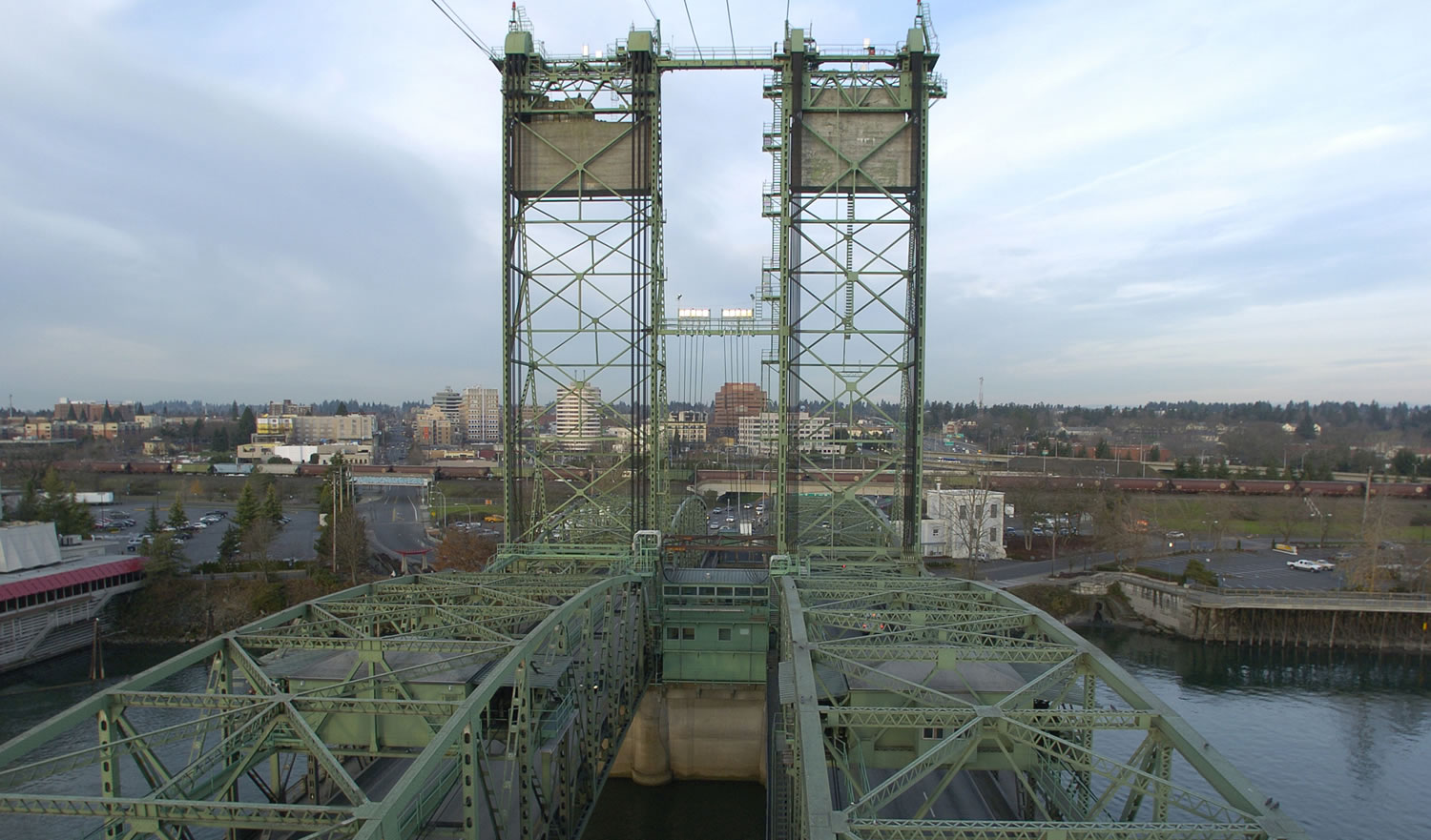The Oregon Department of Transportation has pulled down a line on a seven-year-old website that said the current Interstate 5 bridges — with proper maintenance — “could serve the public for another 60 years.”
Critics of the project — who often cite the line as justification to kill the $3.5 billion Columbia River Crossing — are calling the move an Orwellian attempt to rewrite the past.
But ODOT officials said Friday that the information is incorrect and that’s why it was removed. New studies show that the bridge is in need of ever-increasingly expensive and pressing maintenance, spokesman Don Hamilton said.
Until last week, an ODOT website explaining a $10.8 million electrical upgrade project for the I-5 bridges, finished in 2005, noted the bridges have a staff of nine full-time maintenance workers. Only three other Oregon bridges, all in Astoria, have such staffs, it added.
“With ongoing preservation, the bridges can serve the public for another 60 years,” it read.
As of last week, that portion has been erased from the site.
The deletion was pointed out by Evan Manvel, who has worked against the CRC project for the Coalition for a Livable Future. Manvel had tweeted the line and link in early July — and ODOT had responded, in 140 characters or less, that the information was inaccurate. It then pulled the lines.
“Simply put, it’s Orwellian — our tax dollars are being used to deliberately hide inconvenient facts from the public’s eyes,” Manvel wrote to The Columbian. “Taxpayers and legislators should be outraged.”
ODOT spokesman Don Hamilton said the page is “defunct” and hasn’t been updated since the electrical work was finished. The only time that 60 years of life figure was used was on that site, he added.
“The problem with that statement is that it was incorrect,” Hamilton said. “It was removed, finally, because it was wrong, because it was out of date, and because it was confusing.”
Both the northbound span, built in 1917, and the southbound span, finished in 1958, were rated as functionally obsolete in their 2011 inspections, he said. The northbound bridge has a sufficiency rating of 18.5 on a scale of one to 100 (with one the lowest and 100 the highest); the southbound bridge has a rating of 51.
Additionally, as reported in The Columbian in May, a 54-year-old trunnion, or axle, has cracked. ODOT engineers say it will last until about 2026 and then need to be replaced. It’s one of eight on the bridge responsible for lifting and lowering the 170-ton drawbridge and its counterweights.
“Nothing that we’re doing as far as work on the bridge is designed to influence political will on Columbia River Crossing,” Hamilton said.
Manvel called the definition of a functionally obsolete bridge a “term of art.”
“I just think their spin machine is in full cycle,” Manvel said. “They’re working to remove anything that undermines their case. If we can’t trust the information they’re putting out on their own web page, why would we trust them in their new reports?”
He pointed out that the states lack money for the maintenance they need to do now, let alone find more funding for large new projects like the CRC.
“Certainly, we’d all like new clothes and new cars everyday, but the overall argument of the CRC and what they’re presenting to legislators is utterly without context and comparisons to other investments,” Manvel said.
But Hamilton said the CRC replaces more than just the bridge spans, which are seismically unsound. The CRC covers five miles, seven interchanges and includes separate bridges for light rail and pedestrians and cyclists.
“The bridge today is safe,” Hamilton said. “Whether it can stand the demands of the future and hold up to the congestion, hold up to the safety issues, and hold up to the demand issues that are going to be there is different. Keeping a bridge functioning is not the same as fixing the problems that are associated with it.”
Andrea Damewood: 360-735-4542; http://www.twitter.com/col_cityhall; andrea.damewood@columbian.com.



